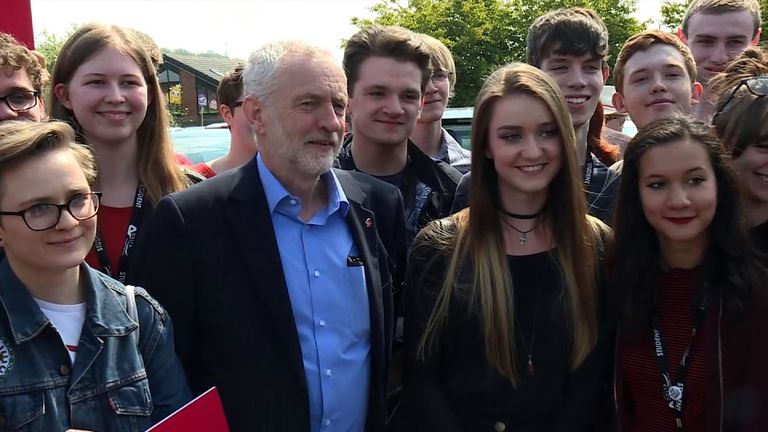Was the 'youthquake' at the 2017 general election a myth?
A new study says the youngest voters didn't turnout in any greater numbers than in 2015, and it was in fact people in their 30s.
Monday 29 January 2018 12:18, UK
Theresa May should blame people in their 30s, rather than the youngest voters, for the loss of her parliamentary majority, a new study suggests.
"Youthquake" was the Oxford English dictionary's "word of the year" for 2017, after a surge in turnout among 18-24 year-olds in last year's general election was claimed by some as boosting Jeremy Corbyn's Labour Party.
But academics from the "gold standard" British Election Study say that was not the case.
In contrast to the findings of some pollsters in the immediate aftermath of the election, the youngest voters didn't turnout in any greater numbers than in 2015.
The methodology used by the academics - which is too expensive and takes too long to be used for polling in the run up to elections - allows a more accurate view of turnout, with claimed turnout also checked against the electoral register.
Rather, it was people in their 30s who turned out in greater numbers than normal in the 2017 general election.
Young people who did vote were, as suggested by polls at the time, much more likely to have voted for Jeremy Corbyn's Labour Party than for Ed Miliband.
Though every age group up to people in their 70s voted Labour in larger numbers in 2017 than 2015.
For Mrs May, it appears it was people in their 30s, rather than their 20s, who had a greater impact - but the overall story is, as always, more complicated than that.



